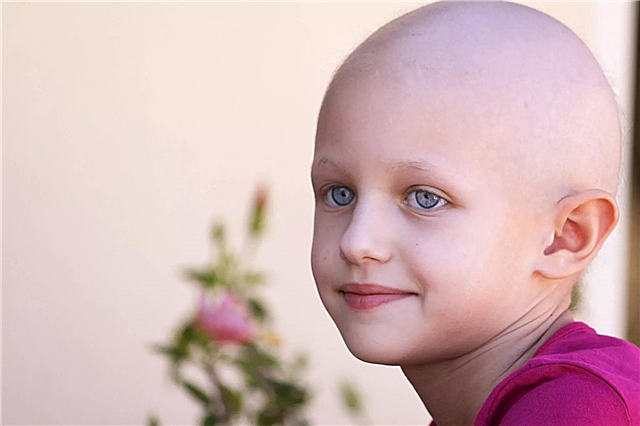When a child has a sore groin, it can be a symptom of many diseases or the result of an injury. Only a thorough examination will determine what caused the pain and what treatment should be prescribed.

The baby has a sore groin
Causes of groin pain
The groin is the area between the lower abdomen and the thigh. It contains many important internal organs, muscles and ligaments, nerve endings and lymph nodes. Groin pain should not be underestimated as it can indicate a number of serious pathologies.
Important! To diagnose the causes of pain in the groin area, it is necessary to determine their nature and identify possible diseases, the symptom of which may be pain. Attention should be paid to their nature, circumstances of occurrence and the direction in which pain sensations spread.
It is in the groin that the iliopsoas muscles, the rectus femoris muscle, the adductors of the thigh, the femoral veins and arteries, the pubic and sciatic muscles, and the capsule of the hip joint are located.
In a child, groin pain is a non-specific symptom that may indicate diseases:
- organs of the abdominal cavity;
- genitals;
- spine;
- circulatory system;
- urinary tract.
The most common causes of groin pain in a boy are:
- Inguinal hernia;
- Infections resulting in enlarged inguinal lymph nodes
- Appendicitis;
- Orchitis;
- Dropsy of the testicle;
- Femoral neuropathy;
- Chickenpox;
- Injury.
Disease symptoms
Each disease that causes groin pain has its own characteristic symptoms.
Inguinal hernia
An inguinal hernia is a soft bulge in a child's groin that contains parts of organs (fragments of the intestine, sometimes an ovary or bladder) that are pushed out of the abdomen. It is a common birth defect (occurs in 1-5% of children, more often in boys and premature babies). It happens on one side, much less often - bilateral.

Inguinal hernia in children
Important! A genetic factor has a great influence on the development of an inguinal hernia.
Symptoms:
- A localized bulge in the groin or scrotum that becomes especially noticeable when the abdominal muscles are tightened (crying or defecation)
- pain around the hernia.
In more than 90% of cases, there is no need to conduct any examination, except for visual examination and palpation. If there is any doubt, an ultrasound scan may be prescribed.
Dropsy of the testicle
Since dropsy of the testicle is the result of the accumulation of serous fluid between the inner membranes of the organ, its most characteristic symptom is an enlarged scrotum. In infants, this is most often a congenital pathology (primary hydrocele). Acquired hydrocele can be the result of injury, testicular inflammation, or complications after surgery, such as varicocele (enlargement of the veins in the scrotum).
Important! This condition rarely causes pain. The skin, although stretched, does not change its color. There is no inflammation, there are no problems with urination, therefore, dropsy of the testicle is often found by chance or with a large swelling of the scrotum.

Dropsy of the testicle
The size of the edema may vary. The accumulating liquid has a volume of several tens to several hundred milliliters and has an amber color. With a large amount of edema, there is a feeling of obstacle when walking.
Diagnosis of the disease is based on:
- A diaphanoscopy, or light, of the scrotum so that you can check if light is passing through the enlarged testicle. If light enters and scatters from the other side, it means that a hydrocele is present;
- Ultrasound of the scrotum.
Inflammatory process
Infections of the kidneys (pyelonephritis) and urinary tract infections can inflame the lymph nodes in the groin and cause pain. If severe pain is present on the right side, it may be appendicitis or inflammation of the colon.
In addition to pain in the groin, inflammatory processes have other symptoms:
- difficulty urinating and pain with it;
- temperature rise;
- difficulty in defecation or, conversely, diarrhea.
A general and biochemical blood test will help determine if the pain in the groin is associated with inflammation. Ultrasound examination will show a violation of the blood vessels, nephritis, varicocele. Computed tomography of the abdomen will detect urinary tract diseases.
Orchitis
Orchitis is an inflammation of the testicles that causes groin pain and swelling of the scrotum. It happens in children and adults, only the reasons for its occurrence differ for different ages.
If a boy has pain in the groin caused by orchitis, then this is usually associated with a primary viral disease, most often mumps, much less often flu. One in four boys who are infected with the mumps virus may develop orchitis.

Orchitis
Its symptoms:
- swelling and redness of the skin of the scrotum;
- pain in the testicles;
- pain when touching the genitals.
Important! When inflammation affects only one testicle, it hurts on one side. However, simultaneous inflammation of both testicles is possible, as well as its subsequent spread from one testicle to both.
The most important thing in diagnosing orchitis is to collect information about all the diseases that the patient had. After that, additional tests are assigned:
- a general urinalysis (especially useful when it is suspected that an underlying infection was present in the urinary tract);
- Ultrasound of the testicle.
Injury
Injuries that can cause pain in the groin and thigh from the inside occur with impacts, sprains. The child may twist his leg or fall. Discomfort is also triggered by sudden movements.
When the pain is severe, it indicates a fracture of the femoral neck, pubic bone, or femur. The hip joint may also be dislocated or severely bruised. Other symptoms include inability to move the leg, bruising, and swelling. An x-ray is usually taken to diagnose injuries.
Chickenpox
Chickenpox is an infectious disease transmitted by the varicella-zoster virus. The first symptoms before the appearance of ulcers:
- malaise;
- lack of appetite;
- pain in the abdomen, muscles, throat.
Rashes appear on the skin and mucous membranes, sometimes on the genitals. Then bubbles form, which burst, and ulcers develop. In addition to rashes and itching, there is a high fever, an increase in cervical lymph nodes.

Chickenpox in children
If sores appear in the urethra, then there is pain in the groin, swelling of the genitals. Chickenpox is most often diagnosed based on patient interview and visual examination. Analyzes can be prescribed if complications develop.
Development of diseases
Each disease has its own clinical picture and characteristic signs of development:
- Inguinal hernia in infants takes its origin from the processes originating in the mother's womb. The testicles along the processus vaginalis gradually descend into the scrotum. This process ends at the 20th week of pregnancy, then the vaginal process should overgrow. If this does not happen, then conditions are created for the occurrence of a hernia. Over time, an inguinal hernia can lead to a serious complication - seizure, when the ring of the inguinal canal is compressed so that it prevents a fragment of intestine from returning from the hernial sac. Symptoms of intestinal obstruction appear: bloating, vomiting. The hernial protrusion becomes hard, painful, the groin area and scrotum turn red;
- Dropsy of the testicle develops as a result of difficult childbirth, hereditary factors, prematurity, infectious diseases suffered during pregnancy, injuries, diseases of the genitourinary system, benign and malignant tumors. Sometimes it is almost asymptomatic;
- Orchitis occurs against the background of infectious diseases and in the infant is accompanied by severe crying, especially when urinating, scrotal edema. Body temperature may rise;
- If the child's immunity is strong, then chickenpox is mild. In case of immunity disorders, complications are possible, such as meningitis, blood infections, pneumonia, inflammation of the joints.
Difference Ways
It is possible to differentiate many diseases that lead to groin pain by visual signs. For example, a hernia is characterized by a localized bulge, for chickenpox - the presence of rashes on the skin, for dropsy of the testicles - the appearance of an asymmetry of the scrotum and skin tension on it.
Important! Often it is necessary to resort to additional diagnostics, especially in inflammatory processes and injuries. If the baby has pain during urination, he became restless and often cries, his genitals are swollen and reddened, it is necessary to see a doctor.
Treatment
After diagnosing and determining why the boy has pain in the groin, treatment is prescribed.
Events:
- In the case of a congenital inguinal hernia, no other treatment is applied other than surgery;
- Hydrocele treatment consists of a simple surgical procedure. The purpose of the surgery is to remove excess fluid. Very rarely, a puncture is used to drain fluid. The method has drawbacks - it carries the risk of infection and does not solve the problem, since the hydrocele recurs.
Important! In infants, surgery is performed no earlier than after 2 years of age, as the hydrocele often disappears on its own.
- The recommended treatment for orchitis depends on the underlying cause. If the inflammation is caused by bacteria infiltrating, antibiotics are used. Apply cold compresses to the testicles to relieve pain;
- When chickenpox passes easily, symptomatic medications are used: topical disinfectants and antipyretics. In case of complications, antiviral agents are used.

Chickenpox treatment
Preparations:
- With chickenpox, antipyretics (Paracetamol) and brilliant green are prescribed to disinfect ulcers in order to avoid secondary infection. Antiviral drugs (Acyclovir, Virolex) can be used only from 2 years old;
- If the child has orchitis, use anti-inflammatory and pain relievers (Paracetamol, Ibuprofen).
When groin pain is caused by inflammation that occurs during the primary infection, specialized medications are used to treat the infection.
Groin pain in a teenager
If a teenage boy has a groin pain, in addition to the above reasons, it may be growing pains. They are associated with rapid muscle growth and are felt mainly in the back of the calves or front of the thighs. These groin pains are caused by tendon growth.

Groin pain in a teenager
This pain is not regular. It appears every few days or weeks, most often in the evening or at night. If pain occurs, the teenager may limp. If this is a pain of growing, then nothing needs to be done.
Important! Make sure that muscle and tendon pain is not accompanied by other illnesses. Temperature, lack of appetite, pain on touch, and swelling and bruising are alarming symptoms and do not occur during intense muscle growth. They could be evidence of infection or injury.
Any disease that affects the lower abdomen and spine can manifest as groin pain. If it does not go away, you need to see a specialist, because these diseases are dangerous.



